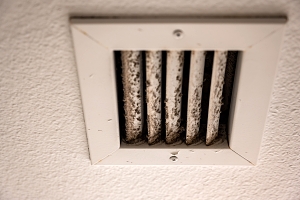Uncover Hidden Hazards: The Ultimate Guide to Choosing the Best Mold Test Kit for Your Home
Are you worried that mold might be lurking in your home, putting your health and well-being at risk? You’re not alone—many homeowners face this sneaky threat without even realizing it. Mold can breed in hidden corners, adversely affecting air quality and causing various health issues. The good news is that you can take proactive steps to protect your space. In this ultimate guide, I’ll walk you through how to choose the best mold test kit tailored to your needs. From understanding the types of kits available to evaluating their effectiveness, I’ll help you get the knowledge and tools you need to keep your home—and your family—safe and healthy.
Want a mold test kit you can trust? Order yours today at dirtconnectionsstore.com.
Understanding the Importance of Mold Testing Mold in the home is more than just an unsightly nuisance; it can pose serious health risks to you and your family. Mold spores are microscopic and can easily become airborne, leading to respiratory issues, allergic reactions, and even more severe health problems for those with compromised immune systems. Mold thrives in damp, dark environments, which means it can often go unnoticed until it becomes a significant problem. Regular mold testing is essential to ensure your living environment is safe and to catch any mold growth before it becomes a major issue.
For homeowners, understanding the importance of mold testing cannot be overstated. Mold can grow behind walls, under floors, and in other hidden spaces where it is not easily detectable with the naked eye. Testing for mold provides peace of mind and helps identify areas that need attention, allowing you to take action before the mold spreads and becomes more difficult and costly to remove. Additionally, mold testing can help pinpoint the type of mold present, which is crucial for determining the appropriate remediation methods.
Ignoring potential mold growth in your home can lead to long-term structural damage and decreased property value. Mold can weaken the integrity of building materials, leading to costly repairs. Moreover, if you plan to sell your home, a history of mold problems can deter potential buyers or lower your property’s market value. Regular mold testing, therefore, is not only a health safeguard but also a wise investment in maintaining your home’s structural integrity and marketability.
Types of Mold Test Kits Available
When it comes to testing for mold in your home, there are several types of mold test kits available, each with its own method of detection and level of accuracy. The three primary types of mold test kits are air sampling kits, surface sampling kits, and bulk sampling kits. Each type has its specific use and benefits, depending on the situation and the areas of your home you want to test.
Air sampling kits are designed to measure the concentration of mold spores in the air. These kits generally include an air pump and a collection device that traps airborne spores on a sticky surface or in a collection container. After collecting the sample, you usually send it to a laboratory for analysis. Air sampling is particularly useful for detecting mold spores that are not visible but may be causing health issues due to poor indoor air quality.
Watch the video to see how easy it is to test your home for mold—before it becomes a problem
Surface sampling kits involve swabbing or tape-lifting samples from specific surfaces where mold growth is suspected. These kits are useful for identifying the presence of mold on surfaces such as walls, ceilings, and furniture. The collected samples are then sent to a laboratory for analysis to determine the type and concentration of mold. Bulk sampling kits, on the other hand, involve taking pieces of material (like drywall or insulation) from areas where mold is suspected. This type of sampling is more invasive but can provide detailed information about mold growth within building materials.
Key Features to Look for in a Mold Test Kit
Choosing the right mold test kit involves considering several key features that can impact the accuracy and ease of use of the kit. One of the most important features to look for is the sensitivity of the test kit. A highly sensitive kit can detect even low levels of mold spores, providing a more accurate assessment of the mold situation in your home. Look for kits that have been tested for sensitivity and have received positive reviews from users and experts alike.
Another crucial feature to consider is the comprehensiveness of the test kit. Some kits only test for specific types of mold, while others are designed to detect a wide range of mold species. A comprehensive mold test kit can give you a better overall picture of the mold situation in your home and help you determine the appropriate remediation steps. Additionally, consider whether the kit includes all necessary components for sampling and analysis, such as collection devices, detailed instructions, and shipping materials for sending samples to a lab.
Ease of use is also an important factor when selecting a mold test kit. The best kits come with clear, step-by-step instructions that make the sampling process straightforward, even for those without prior experience. Some kits also offer quick turnaround times for lab results, allowing you to get the information you need promptly. Finally, consider the cost of the kit, including any additional fees for lab analysis, to ensure it fits within your budget while still providing reliable results.
How to Use a Mold Test Kit Effectively
Using a mold test kit effectively involves following the instructions provided with the kit carefully to ensure accurate results. Start by identifying areas in your home where mold is likely to be present, such as basements, bathrooms, kitchens, and areas with visible water damage. Clean the area lightly to remove surface dust, which could interfere with the test results, but avoid using any cleaning agents that might kill the mold before you take the sample.
For air sampling kits, place the collection device in the area you want to test and follow the instructions for operating the air pump. Be sure to collect samples from multiple areas of your home to get a comprehensive understanding of the mold levels. For surface sampling kits, use the swabs or tape provided to collect samples from areas with visible mold growth or areas you suspect may have mold. Make sure to label each sample clearly and keep track of the locations where each sample was taken.
Once you have collected your samples, follow the instructions for packaging and sending them to the laboratory for analysis. Some kits may include prepaid shipping materials, while others may require you to arrange shipping yourself. After sending the samples, be sure to monitor your email or mailbox for the results, which typically include a detailed report on the types and concentrations of mold found in your samples. Use this information to determine the next steps for mold remediation and prevention.
Interpreting Mold Test Results
Interpreting mold test results can be daunting, but understanding the report is crucial for taking appropriate action. Mold test reports generally include details about the types and concentrations of mold spores found in your samples. Compare these results against the baseline levels provided in the report to determine whether the mold levels in your home are within normal ranges or if they indicate a problem that needs addressing.
The presence of certain types of mold, such as Stachybotrys (commonly known as black mold), can be particularly concerning due to their potential health risks. High concentrations of any mold type can indicate a significant problem, especially if they exceed the baseline levels for indoor environments. If the report shows elevated levels of mold spores, it’s important to identify the source of the mold and take steps to address it, whether through DIY methods or professional remediation services.
Additionally, consider the distribution of mold spores in your home. If mold is present in multiple areas, it may indicate widespread contamination that requires comprehensive remediation efforts. On the other hand, if mold is localized to specific areas, targeted remediation may be sufficient. Use the test results to develop a remediation plan and consider consulting with a mold remediation professional if you need help interpreting the results or determining the best course of action.
Common Mold Types and Their Health Risks
Mold comes in many different types, each with its own potential health risks. Understanding the common types of mold and their associated health issues can help you better assess the severity of a mold problem in your home. Some of the most common types of mold found in homes include Aspergillus, Cladosporium, Penicillium, and Stachybotrys.
Aspergillus is a common type of mold that can be found both indoors and outdoors. While it is generally not harmful to healthy individuals, it can cause allergic reactions and respiratory issues in sensitive individuals. In rare cases, exposure to Aspergillus can lead to more severe conditions such as aspergillosis, a serious lung infection. Cladosporium is another common mold that can grow on a variety of surfaces, including fabrics, wood, and HVAC ducts. It is known to cause allergic reactions, asthma, and sinus infections.
Penicillium is often found in water-damaged buildings and can cause allergic reactions, respiratory issues, and sinus infections. It is also known for producing mycotoxins, which can have more severe health effects with prolonged exposure. Stachybotrys, commonly known as black mold, is one of the most concerning types of mold due to its potential health risks. Exposure to Stachybotrys can cause severe respiratory issues, neurological problems, and other serious health conditions, especially in individuals with weakened immune systems.
DIY Mold Testing vs. Professional Testing Pros and Cons
When it comes to mold testing, homeowners have the option of conducting DIY tests or hiring professional mold inspectors. Each approach has its own set of advantages and disadvantages that should be considered when deciding which is best for your situation. DIY mold testing kits are generally more affordable and can be used at your convenience. They allow you to take control of the testing process and can provide quick results, especially if you use a kit with on-the-spot analysis capabilities.
However, DIY mold testing kits have limitations in terms of accuracy and comprehensiveness. Improper collection methods or contamination of samples can lead to inaccurate results. Additionally, most DIY kits require sending samples to a lab for analysis, which can add to the overall cost and delay the receipt of results. DIY kits may also be less effective in identifying hidden mold growth or in situations where a detailed assessment of the mold problem is needed.
Professional mold testing, on the other hand, offers a higher level of accuracy and thoroughness. Certified mold inspectors have the expertise and equipment to conduct comprehensive assessments of your home, including areas that are difficult to access or test with DIY kits. They can provide detailed reports and recommendations for remediation based on their findings. The main drawbacks of professional testing are the higher cost and the need to schedule an inspection, which may not be as convenient as DIY testing. Ultimately, the choice between DIY and professional testing depends on your budget, the severity of the mold problem, and your comfort level with conducting the tests yourself.
Recommended Mold Test Kits for Homeowners
With so many mold test kits on the market, it can be challenging to choose the best one for your needs. To help you make an informed decision, we’ve compiled a list of some of the top-rated mold test kits available for homeowners. These kits have been selected based on their accuracy, ease of use, and overall customer satisfaction.
The Healthful Home 5-Minute Mold
Test is a popular choice for its quick and easy testing process. This kit tests for harmful molds like Aspergillus and Stachybotrys in just five minutes. It works great for homeowners who need fast results. The kit includes everything you need to complete your test. You can easily read the results without lab analysis. Another great option is the Mold Armor Do It Yourself Mold Test Kit. It includes tools for both air and surface testing. Homeowners trust this kit for its accuracy and ease of use. You can identify mold spores in different parts of your home.
For those looking for a more detailed analysis, the My Mold Detective Mold Test Kit is an excellent option. This kit includes an air sampling pump and collection cassettes that can be sent to a lab for professional analysis. The detailed lab report provides information on the types and concentrations of mold spores, helping you make informed decisions about remediation. The Pro-Lab Mold Test Kit is another reliable option that includes air, surface, and bulk sampling components. This kit is user-friendly and provides lab analysis for a comprehensive assessment of the mold situation in your home.
You can order your mold test kit today at dirtconnectionsstore.com—and if you use our Amazon affiliate link, you help support the creation of helpful resources just like this blog and our YouTube channel. It costs you nothing extra, and it keeps this content coming.
Best Practices for Mold Prevention and Remediation
Preventing mold growth in your home is essential for maintaining a healthy living environment. One of the most effective ways to prevent mold is to control moisture levels. Ensure that your home is well-ventilated, especially in areas prone to moisture, such as bathrooms, kitchens, and basements. Use exhaust fans, dehumidifiers, and air conditioners to reduce humidity levels and keep your home dry.
Regularly inspect your home for signs of water damage, such as leaks, condensation, and damp spots. Address any issues promptly to prevent moisture from accumulating and creating an environment conducive to mold growth. Repair leaks in roofs, walls, and plumbing, and ensure that gutters and downspouts are functioning properly to direct water away from your home. Additionally, consider using mold-resistant materials in areas prone to moisture, such as mold-resistant drywall, paint, and insulation.
If you do find mold in your home, it’s important to address it promptly and effectively. Small areas of mold can often be cleaned with household cleaning products like detergent and water, or a mixture of vinegar and water. For larger or more severe mold problems, it’s best to consult with a professional mold remediation service. Professionals have the expertise and equipment to safely and thoroughly remove mold and prevent it from returning. Always follow safety precautions when dealing with mold, such as wearing protective gear and ensuring proper ventilation.
Conclusion
Choosing the right mold test kit helps protect your home and your health. Understand why mold testing matters to your safety. Learn about the different types of kits and the key features that matter. Select a mold kit that fits your needs and budget. Test your home regularly to catch mold before it spreads or becomes costly. DIY kits work well for small issues around the house. Hire a professional if the mold is widespread or severe. Early testing helps prevent health problems and expensive structural damage.
Know how to read your mold test results. Understand the common types of mold and the health risks they carry. Compare DIY kits and professional testing services to decide what works best for you. Popular kits include Healthful Home, Mold Armor, My Mold Detective, and Pro-Lab. These kits are reliable, easy to use, and widely trusted by homeowners.
Prevent mold by keeping moisture levels low throughout your home. Fix leaks and water damage as soon as you find them. Use mold-resistant materials in areas like bathrooms, basements, and kitchens. If you find mold, clean it up right away. Call a professional if the job feels too big or risky.
Act early. Stay informed. Protect your home and your loved ones with the right tools and knowledge. With the right knowledge and tools, you can uncover hidden hazards and create a safer, healthier home.
Ready to take action? Visit dirtconnectionsstore.com to find the right mold test kit for your home today.
Summary

Dirt Connections was started with one goal in mind: providing quality residential and commercial construction services to clients on time and on budget. Reach out for more information on how we can support your next project.
For your convenience our estimates are free and by appointment. Call 703-940-9949 for a free estimate today!









































